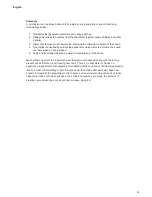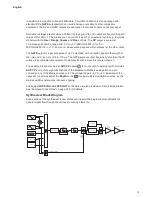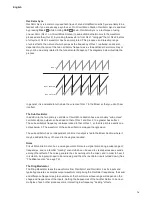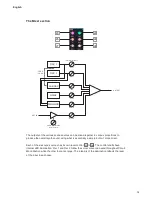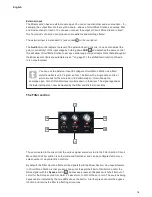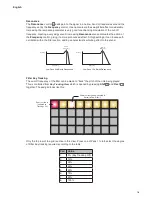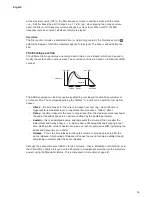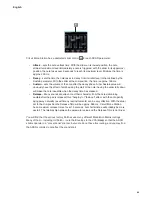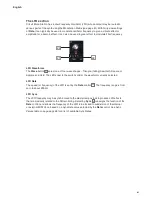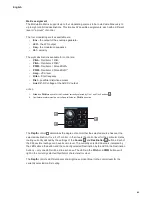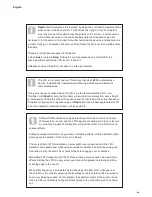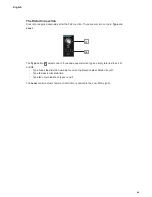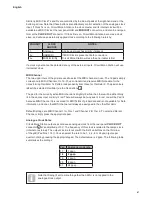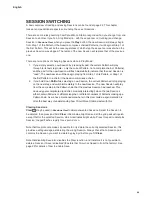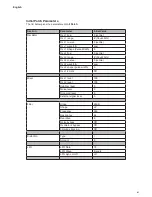
84
English
Depth
effectively defines the “amount” by which the controlled parameter varies
when under modulation control. Think of it as the “range” of control. Depth is
also “bi-polar” and thus determines the polarity of the control – positive values
will increase the value of the controlled parameter and negative values will
decrease it, for the same control input. Note that having defined source and destination in
a matrix routing, no modulation will occur until the Depth control is set to something other
than zero.
There is one important exception to the above:
i) when
Env
is routed to
Amp
, the Depth control operates as an on/off switch: the
envelope either controls the VCA level or it doesn’t.
ii)Negative values of Depth do not work on certain parameters.
The LFO is a bi-polar Source. This means that when
LFO
is selected as a
Source, the destination parameter(s) will swing both above and below its
unmodulated value.
This is most easily visualised when the LFO is routed to modulate the Pitch of an
Oscillator: with
Depth
at zero, the Oscillator will sound at its normal pitch, but as Depth
is increased positively, the pitch will rise above and then fall below the normal frequency.
The effect of positive and negative values of
Depth
can then be best appreciated if LFO
is set to an asymmetrical wave shape such as sawtooth.
Adding LFO Modulation can add a pleasing vibrato when a sine or triangle
LFO waveform is used, and the LFO speed is set neither too high nor too low.
A sawtooth or square LFO waveform will produce rather more dramatic and
unusual effects.
Adding envelope modulation can give some interesting effects, with the oscillator pitch
altering over the duration of the note as it is played.
The sonic effect of LFO modulation on pulse width is very dependent on the LFO
waveform and speed used, while using envelope modulation can produce some good
tonal effects, with the harmonic content of the note changing over its duration.
Modulating Filter frequency with the LFO can produce some unusual “wah-wah” type
effects. Setting the LFO to a very slow speed can add a gradual hardening and then
softening edge to the sound.
When Filter frequency is modulated by the Envelope, the filter action changes over
the duration of the note. By adjusting the Envelope controls carefully, this can produce
some very pleasing sounds, as for example, the spectral content of the sound can be
made to differ considerably during the attack phase of the note compared to its “fade-
out.
Содержание Circuit Mono Station
Страница 1: ......
Страница 93: ...93 English...

